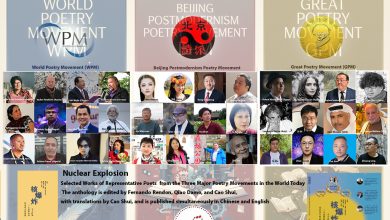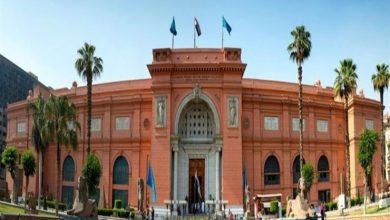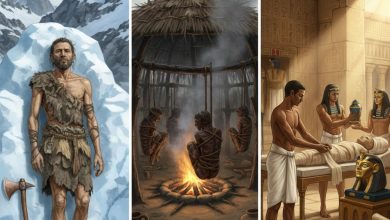
Many remarkable figures in Serbian science, education, and culture have been forgotten. While time has brought some of them back into the public eye and their work has been rehabilitated, others have faded into obscurity with no one to bring them back. One such figure is the Serbian scientist Dr. Miloš Marić (the Younger), whom most people have never even heard of. Of the few who have, most only know that he was the younger brother of the great Serbian and world-renowned scientist Mileva Marić Einstein.
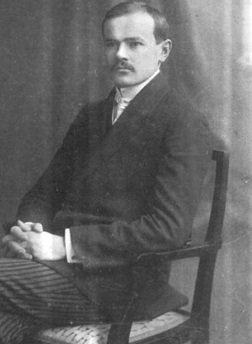
(photograph from the archive of relative Dragiša Marić)
Not only did Miloš Marić remain in the shadow of his sister Mileva, but his own highly significant scientific work has remained unknown or insufficiently explored in Serbia to this very day. It is up to future generations to correct this injustice.
In the Shadow of His Sister, Mileva Marić Einstein
Miloš Marić was born in 1885 in Ruma as the youngest child of Miloš and Marija (née Ružić) Marić. At the time of his birth, his sister Zorka was two years old, and his eldest sister Mileva was ten. His destiny, like that of his two sisters, was shaped by science, family circumstances, and historical events. Interestingly, Miloš was named after his father, following an old Serbian tradition of naming a son after the father in an attempt to stop the recurring loss of children in the family. To distinguish him from his father, he was most often referred to as Miloš Marić the Younger, and later as Dr. Miloš Marić.
Miloš’s father had a distinguished military career in the Austro-Hungarian Empire. A well-off and highly educated man, he dedicated all his efforts to educating his three children. What is fascinating is that all three chose the path of science and were deeply committed to it. Mileva became a world-renowned scientist, Zorka studied biology in Zurich before her studies were interrupted by illness, and Miloš Marić became a histologist who laid the foundations for the medical field now known as cloning!
Miloš Marić the Younger attended primary school in Zagreb, and completed both lower and upper secondary education in Novi Sad. Frequent relocations were the result of his father’s military assignments. When his father bought a house in Kisačka Street in Novi Sad, the family settled in the capital of Vojvodina. In 1896, his father retired and, with a generous pension, his and his wife’s inheritance, and a loan he secured in 1893, quickly amassed wealth—one of the key factors that allowed him to send his children to study abroad.
The intellectual climate of Novi Sad had a very positive influence on the development of Miloš Marić, considering that it was the city of Matica srpska, the Serbian Reading Room, the Serbian National Theatre, and influential newspapers like Zastava and Branik. Growing up in a city rich in cultural and educational content, and surrounded by progressive and gifted sisters, Miloš naturally gravitated toward science. It was inevitable that such an environment would leave a mark on his character. Even as a young man, Marić demonstrated that he was an intellectual with strong convictions, often participating in circles that advocated for progressive ideas, especially focusing on the economic and cultural revival of Vojvodina. When he chose medicine as his life’s calling, he likely had no idea how far he would go as a scientist. Yet in Serbian-language literature, he would be mentioned in only one book—The Encyclopedia of Novi Sad—and even then only as “Mileva Marić Einstein’s brother, ten years her junior.”
Leaving Serbia
Like his older sisters, Miloš Marić decided to devote himself to science, especially medicine. He began his medical studies at the Hungarian University of Kolozsvár (in today’s Romanian city of Cluj). He later continued his studies in Switzerland, where he spent a year (1905–1906), and then went on to Paris and Bern, where he visited his sister Mileva Marić and spent time with his nephew Hans Albert and his brother-in-law Albert Einstein.

Mileva’s son Hans Albert, and their friend Sofija Galić
(Photo source: https://facebookreporter.org)
Miloš Marić successfully completed his medical studies in Cluj. After graduating in 1907, he began working at the Psychiatric Clinic. He quickly advanced from junior to senior assistant at the Department of Histology under the mentorship of the renowned neuropathologist István Apáthy.
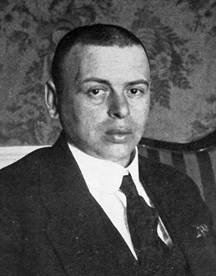
(Photo: Wikipedia / Public Domain)
As a citizen of Hungary, Marić fulfilled his military service in the Sixth Infantry Honvéd Regiment and later served at the military hospital in Budapest. During this period, he befriended the Hungarian revolutionary Béla Kun (1886–1938), which was one of the reasons he eventually joined the Social Democratic Party of Hungary.
Certainly, Marić—by then already equipped with considerable knowledge and experience—naturally attracted the attention of those around him, who wanted him in their ranks.
In 1913, Miloš Marić married a well-off local woman named Marta, reportedly at the urging of his father. According to some accounts, he never loved his wife, was deeply dissatisfied with his life at the time, and viewed the marriage as a kind of imposed obligation. The marriage was officially dissolved in 1924, when Miloš Marić was declared missing and his wife recognized as a widow.
What makes his story particularly intriguing is that Marić never returned to Serbia. After he went off to war, all trace of him disappeared. It is reliably known that he contacted his parents by letter in 1916 and again in 1924, but never after that. There are claims that Miloš corresponded with his sister Mileva from Russia, but this has never been officially confirmed or proven.
Departure to War – The Path to Becoming a Soviet Scientist
Although Serbian by origin and raised and educated on Serbian soil, Miloš Marić is today regarded as a Soviet scientist. In Russia, he is known and respected. His journey to Russia was in fact a result of wartime circumstances, shaped largely by a twist of fate.
At the very beginning of World War I, Miloš Marić was mobilized and sent to the southern front, where he fought against Serbia. He was later transferred to the northern front to fight against Russia. Fate intervened when, during the retreat of his regiment in Galicia, he was captured by Russian forces and taken as a prisoner of war. There are even some claims that he was not captured but surrendered voluntarily. Either way, Miloš Marić proved to be of great value to the Russians. Recognizing his knowledge and expertise, they sent him to Moscow, where he worked as a physician at the Lefortovo Hospital. Shortly thereafter, he began working at the histology department of the university in Moscow.
It seems that Marić adapted exceptionally well to his new environment. In Russia, he had all the conditions necessary for scientific advancement. He married Maria Vasilievna Karpova there, though he left no descendants.
The Scientific Work of Dr. Miloš Marić
Between 1928 and 1930, Dr. Miloš Marić worked at the Dnipro Institute (then known as Dnipropetrovsk), within the Department of Histology. He then transferred to Saratov University, where he was appointed head professor at the Department of Histology. It was there that he began his most extensive and serious research—focused on direct and indirect cell division.
His work is considered a precursor to cloning research, placing Marić among the pioneers of this field of medicine on a global scale. Many experts agree that it was indeed a Serb—Dr. Miloš Marić—who laid the foundations of cloning.
As a university professor, Dr. Miloš Marić was highly esteemed and respected. He was described as a modest and calm individual who could explain even the most complex topics to his students with ease. He was also praised by his colleague, Professor V. P. Karpov, with whom Marić lived while in Moscow.
A remarkable fact is that Marić is still mentioned today in Russian biology classes—Russian students know the name and legacy of this Serbian scientist, while Serbian students remain completely unaware of his existence.
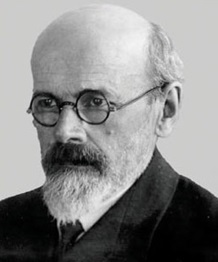
(Photo: Politikin Zabavnik)
Rehabilitation of the Life and Work of Dr. Miloš Marić
If it hadn’t been for Russian physicist Oleg Akimov from the State Institute for Space Research in Moscow—who, during his visit to Novi Sad, while listening to stories about the significance of Mileva Marić, pointed out that in Russia, her brother is even more renowned, and that his research in the field of mitosis and amitosis represents an extremely important contribution to global science—Miloš Marić might have remained completely forgotten.
It is a disheartening fact that not a single scientific paper by Dr. Miloš Marić has ever been translated into Serbian. However, there has been some progress. Increasingly, people are speaking and writing about Dr. Marić. Still, a great deal of work lies ahead for Serbian researchers. A key step would be a visit to the city of Saratov, where Marić lived and worked. He left behind numerous scientific works, some of which remained unfinished due to the outbreak of war.
Death of a Forgotten Serbian Scientist
At the outbreak of World War II, while still working as a professor, Miloš Marić received a call from the Red Army to join the fight against the Third Reich—as a physician. It would be his final call. Due to severely deteriorating health, he died on the front in 1944, never living to see the liberation of his second homeland—Russia.
He was buried in the Russian city of Saratov, where today his memorial room is located. The Russians continue to carefully preserve the memory of the Serbian scientist Dr. Miloš Marić, while in Serbia, the first steps are only now being taken toward his rehabilitation. In Russia, a website has even been launched featuring the biographies of world scientists, including Dr. Miloš Marić.
In Serbia, one organization—the “Small Historical Society” (Malo istorijsko društvo), led by Dr. Drago Njegovan in Novi Sad—is actively working to rehabilitate and promote the legacy of this Serbian scientist (as well as other notable but forgotten figures).
Dr. Miloš Marić is one among many Serbian scientists who, like the great Tesla and Pupin, set out into the world and achieved scientific success. Tesla and Pupin are celebrated—while Miloš Marić was forgotten. Perhaps now is the right time to correct this great historical injustice and restore to Miloš Marić the place in Serbian science that he so richly deserves.

Dr. Ana Stjelja

